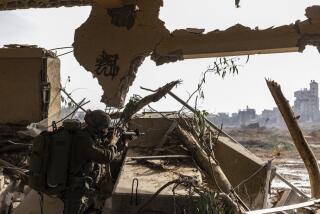Burundi’s Unseen Horror: Army Massacres Unveiled
The world already knows that Hutu rebels stormed a camp of Tutsi families at Bugendana at dawn July 21 and slaughtered 341 people, mostly women and children. The news spread because the Tutsi-led army let reporters and television crews record every grisly detail.
But few also know that the army killed thousands of Hutu civilians between April and July in a horrific series of previously undisclosed massacres.
On June 27, for example, about 500 Hutus in Nyeshenza were rounded up by soldiers, forced to march several hundred yards up a road and then were shot or bayoneted to death outside the mission of the Pentecostal church.
Earlier in June, a military operation by a parachute regiment at Misaga left 111 people dead. In Kanegwa, soldiers killed 46 people, including 40 children and three women. Witnesses said 1,200 people were killed at Mushikamo.
Those and other cases of mass murder, political assassination, summary execution, arbitrary arrest and disappearance in this Central African nation are documented in an internal United Nations human rights report dated July 18. Although atrocities by Hutu militias are also listed, most victims “were killed by elements of the Burundian army,” the report alleges.
Even worse, said a senior U.N. official here, “this represents only 20% to 30% of the killing.” The four U.N. human rights observers arrived in Burundi on April 19, and tense security conditions and army restrictions have made much of the mountainous, Maryland-sized country inaccessible.
In at least one case, according to the report, soldiers prevented investigators from visiting the site of a reported massacre of up to 800 people, mostly women and children, in the marketplace at Kivyuka on May 3.
“Many witnesses blamed the army,” the report said. It added that the local government administrator claimed 29 people had died.
The report said the vicious conflict is “characterized by attacks by rebels on the military and reprisals by the army on civilians who are suspected of collaborating with the rebels or supplying them.”
The military generally ignores or denies such allegations, insisting that only insurgents are killed. “When rebels are killed, we don’t care,” Lt. Col. Longin Minani, the army spokesman, said in an interview. “When they are dead, we don’t count. We would like that all of them be killed.”
Retired Maj. Pierre Buyoya, a Tutsi who toppled the civilian government in an army coup July 25, acknowledged in a news conference that some soldiers were guilty of “misconduct.” But he also blamed “propaganda against the military” for charges that it is burning villages and killing at will across the country.
The conflict here is complex. Although Hutus form the vast majority of the country’s population, the 14% Tutsi minority controls the government, army, economy, land and other sources of power. But Tutsis are bitterly divided along clan, regional, political and other lines. The most recent coup, like its many predecessors, was fundamentally a struggle among rival Tutsi factions.
Officially, the U.N. investigators are simply assessing the possibility of establishing a human rights operation here. Their recent report recommends sending at least 112 human rights observers to Burundi, so that one could be assigned to each district. For now, the operation must await funding from donors and permission from the government.
The U.N. has yet to publicize the report for fear of further antagonizing a military that many here blame for also killing aid workers, including three International Committee of the Red Cross delegates who were ambushed in their vehicle June 4. The Red Cross has since withdrawn from Burundi.
“It’s very tough for us here,” said the senior U.N. official. “How can we be silent? But if we speak out, we become targets too.”
But he grew angry when asked if Burundi will go the way of neighboring Rwanda, which suffered the swiftest mass murder in modern times. A genocidal campaign by the Hutu government, army and civilian militias killed an estimated 800,000 people, mostly Tutsis, in 100 days in 1994.
“I hate this parallel,” he said. “I hate this parallel. I hate it! Because every time we talk, it means our level of damage is Rwanda’s. That’s half a million or 1 million dead. Is 20,000 dead or 100,000 dead not enough?”
The ethnic fratricide in Burundi has killed an estimated 150,000 people, mostly civilians, since 1993, and hundreds of thousands more in periodic waves of carnage since 1972. Despite initial reports of calm, it is now clear that the recent coup had little or no effect on the war outside the capital.
“The coup in Bujumbura didn’t change the equation in the countryside,” a Western diplomat said. “The killing goes on.”
The army launched an offensive in Gitega province, east of the capital, the day after the coup, he said. Refugees fleeing the area told reporters that 50 to 150 people were killed in one hamlet and that the army was burning villages.
“Gitega is very, very hot,” a U.N. military analyst agreed. “The Hutus assassinated the chief of the commando battalion three months ago. Since then, the army has been terrible. In Makebuo, 200 killed. Then Gishubi, 100 killed. Ryansoro, 100 more. In Giheta, 40.”
The bloodletting has escalated sharply since March, when fighting spread to the country’s center and south. As a result, a recent U.N. map of the 16 provinces lists 13 as “red zones,” meaning engulfed in the conflict. The other three, Cankuzo, Kirundo and Muyinga provinces, are listed as “tense” or “very tense.”
Bujumbura remains calm since it is a Tutsi garrison town, surrounded by military camps and roadblocks every mile or so. After the army and extremist Tutsi militias attacked and burned Hutu neighborhoods last year, most Hutus fled the capital for the steep, surrounding hills.
Most of the city’s 5,000 or so remaining Hutus live in a refugee camp run by American missionaries. But the “Johnson Camp” is a frequent target. On July 22, three grenades were thrown in the camp, wounding seven people.
The official combatants are relatively few in number. The Tutsi-dominated army has about 17,000 soldiers. The Hutu rebels, largely based in neighboring Zaire, are believed to have about 10,000 followers, but only 3,000 have guns, according to a Western military analyst.
The army has helicopters, armored cars and artillery, including howitzers, while the insurgents have lighter weapons, including shoulder-fired grenades and small mortars. Mostly, however, the rebels use machetes, hoes and clubs.
“It’s easy to tell who is doing the killing,” the analyst said. “Hutus tend to be shot. Tutsis are hacked to death.”
But there are few real clashes between the rival forces. “If the Hutus attack, the army runs away,” he said. “If the army attacks, the militias flee. It’s very difficult to call this a war. It’s really just attacks on civilians.”
More to Read
Start your day right
Sign up for Essential California for news, features and recommendations from the L.A. Times and beyond in your inbox six days a week.
You may occasionally receive promotional content from the Los Angeles Times.







